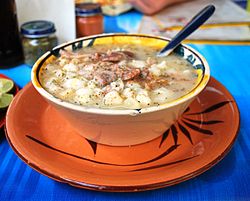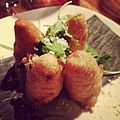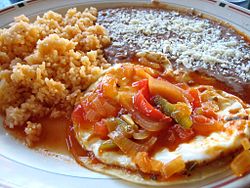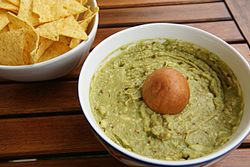

The Spanish invasion of the Aztec Empire occurred in the 16th century. The basic staples since then remain native foods such as corn, beans, squash and chili peppers, but the Europeans introduced many other foods, the most important of which were meat from domesticated animals, dairy products (especially cheese) and various herbs and spices, although key spices in Mexican cuisine are also native to Mesoamerica such as a large variety of chili peppers.
Contents
- Antojitos
- Cheese dishes
- Egg dishes
- Meat dishes
- Beef dishes
- Goat dishes
- Pork dishes
- Poultry dishes
- Other meat and protein dishes
- Moles, sauces, dips and spreads
- Rice and pasta dishes
- Seafood dishes
- Soups and stews
- Vegetable dishes
- Desserts and sweets
- Beverages
- Non-alcoholic
- Alcoholic
- See also
- References
- External links



























